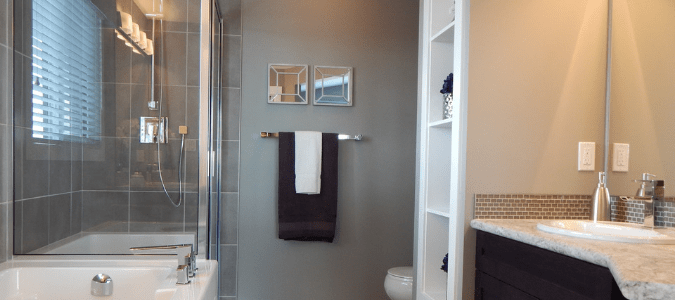
High water pressure in a house might sound like a good thing. No one likes taking a shower with low pressure, and many people rely on a good shower first thing in the morning to wake up. But high water pressure—that is, pressure over 65 psi, or pounds per square inch—is too hard on your home’s internal pipes and fittings. If your home has high water pressure, there will be signs indicating the pressure is too high. It is important to pay attention to these signs so you can remedy the problem before the high water pressure ends up damaging your home’s pipes, water heater, toilets or shutoff valve. Symptoms of high water pressure in a house include:
- A knocking, banging or hammering noise coming from the pipes when you turn on a faucet in the house (this is known as a “water hammer”).
- Leaky faucets.
- Irregular water pressure in your showers and sinks, or water that comes out in spurts.
- Water-using appliances that fail prematurely, such as a water heater, clothes washing machine or a dishwasher with an unusually short lifespan.
- Toilets that run constantly or in cycles, even when they aren’t in use.
If you suspect you have symptoms of high water pressure in your house, there are certain things you can do to address the issue, but untrained homeowners should not take on larger repair jobs themselves.
Read on to learn more about high water pressure in a house, including what normal water pressure is, how to test for high water pressure and why you might want to think twice before taking on lowering high water pressure as a DIY project.
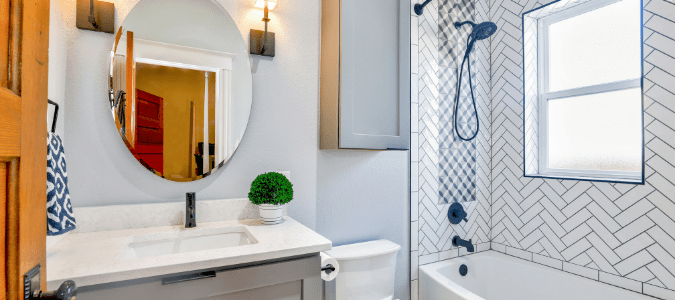
What Is Good Water Pressure For A House?
This is a great question for homeowners to ask, as low water pressure can be downright disappointing and high water pressure can cause damage to your home.
Low water pressure is somewhat obvious; signs include weak showers and faucets that let out just a thin stream of water even when turned on all the way. Low water pressure is annoying and should be remedied, but at least it won’t damage your pipes, valve, water heater or dishwasher like high water pressure can.
The ideal water pressure for a house will be somewhere in the range of about 45 to 65 psi. Anything higher than 80 psi can cause damage, and anything much lower than 45 psi may result in issues when you use your shower, toilet, dishwasher and other water-consuming appliances. While plumbers can sometimes make adjustments to correct low water pressure, some municipal water districts deliver water at a low pressure to some neighborhoods. If the culprit is the latter, a plumber may not be able to resolve the problem.
If you’ve been experiencing some signs of high water pressure in your home, but you’re not sure if it’s high water pressure or something else, there is a way to make sure your water pressure is set appropriately.
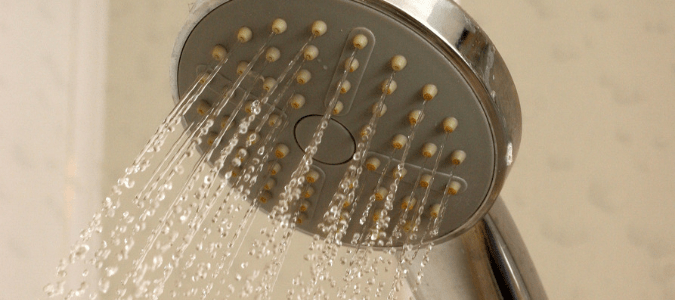
How To Test Home Water Pressure
Fortunately, this task is relatively simple and inexpensive for most homeowners to do themselves. You can purchase a water pressure gauge at your local hardware or home improvement store and use it to test your home’s water pressure. Simply attach the gauge to any hose bib, such as an outdoor faucet, the drain connection on your water heater or the faucet in your utility room.
Before testing the pressure, make sure that you don’t have any other water-consuming appliances running. When you turn on the source of water, remember, you’re looking for somewhere between 45 and 65 psi. If the pressure reading is on the lower or higher side, you can turn off your water source, then try again. If you are getting around the same number each time, you likely have a problem.
If you find that your home has consistently high water pressure, you’ll either need to have your water pressure regulator repaired, or have a new water pressure regulator installed on the main water line that comes into your home. If you have an older home, you may not have a regulator installed at all. If you find yourself in this situation, it would be well worth the cost to have one installed, as these regulators can help homeowners avoid water leaks and expensive plumbing repairs.
Installing a new regulator is not a good project for most homeowners—and especially not for most of us who could easily inadvertently make common plumbing mistakes—as the installation process requires specialized knowledge of plumbing issues. Licensed plumbers will be familiar with the complexities of your plumbing systems, as well as building codes and city regulations for what your psi should be set to.
In addition, installing your own water pressure regulator is not a good do-it-yourself project for most homeowners because of the potential for injury or damage to your home’s water system. That being said, once the new water pressure regulator is installed, a handy homeowner can adjust their water pressure with relative ease without having to call in a plumber.
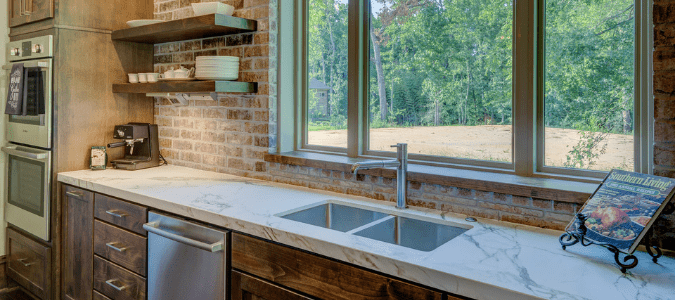
How To Reduce Water Pressure In A House
To adjust the regulator, you’ll first need to turn off the water in your home at the main shutoff valve, which is often located in the utility room or garage, although for many homes this is found near your curb inside the meter box. Next, loosen the locking nut on the water pressure regulator by turning it counter-clockwise. Then turn the adjusting screw counter-clockwise to reduce the water pressure. (Turning it clockwise would increase the pressure.) Once you’ve re-tightened the locking nut and turned the water back on at the main shutoff valve, you can use your water pressure gauge to retest the water pressure and make sure it’s now in the proper zone.
Many water pressure regulators are factory set at 50 psi, which may be too low for your needs. If you’ve had a new regulator installed and you feel the water pressure in your home is too low, it may just need a simple adjustment to get the water to the right pressure.
Another way to help improve the water pressure in your home is to replace old water supply lines with new, steel-braided supply lines. These will include the lines running to your kitchen and bathroom sinks, as well as to your clothes washing machine and dishwasher. Homeowners with a bit of plumbing experience can easily perform this upgrade themselves by purchasing new supply lines at their local hardware or home improvement store. This is also a job that is easily handled by a reputable plumbing professional.
Replacing an old, non-working shutoff valve with a new, quarter-turn ball valve is another relatively easy and inexpensive fix that can help with high water pressure in a home.
Fixing or adjusting your water pressure should be a high priority, as it can cause problems throughout your home.
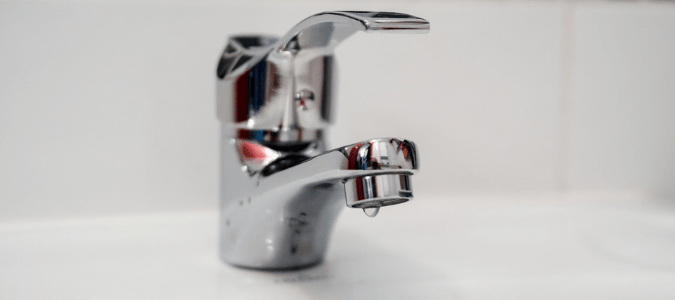
High Water Pressure Problems
If you are experiencing high water pressure problems, it’s important to act quickly in order to avoid extensive damage to your home’s pipes, valve and other water-using appliances. When the water pressure in a home is too high, there are short-term costs such as higher water bills from constantly leaking faucets and toilets. These leaking faucets can also attract pests to your home, including mosquitoes. If you’re wondering how to get rid of mosquitoes in the house, fixing your water pressure can help reduce moisture by eliminating leaks, which will make it more difficult for mosquitoes to thrive in and around your home. High water pressure can also become aggravating, due to the loud noise that is attributed to water being forcefully shoved through your pipes.
But even worse, there is the potential for bigger, longer-term trouble, damage and expense. High water pressure can result in unnecessary wear and tear to your homes’ pipes and can even cause significant leaks. These major water leaks can damage floors, ceilings and walls, not to mention any furniture or artwork in your home that could also be harmed or destroyed in a flood. These leaks are also capable of causing mold damage to your home.
ABC Can Resolve Your Plumbing Problems
If you have leaky faucets or toilets, knocking pipes or other symptoms that make you suspect high water pressure problems in your home, call the licensed plumbing specialists at ABC Home & Commercial Services without delay. Our experts are experienced in handling any plumbing problem, including high or low water pressure; leaky pipes, faucets and toilets; old water supply lines or a shutoff valve that need to be replaced and anything else that may be going awry with your plumbing. When you call us, we will visit your home promptly and make a thorough inspection to determine the exact nature and cause of the problem, and then work with you to devise the best solution—one that will save you both money and trouble over time, and give you much-deserved peace of mind.
